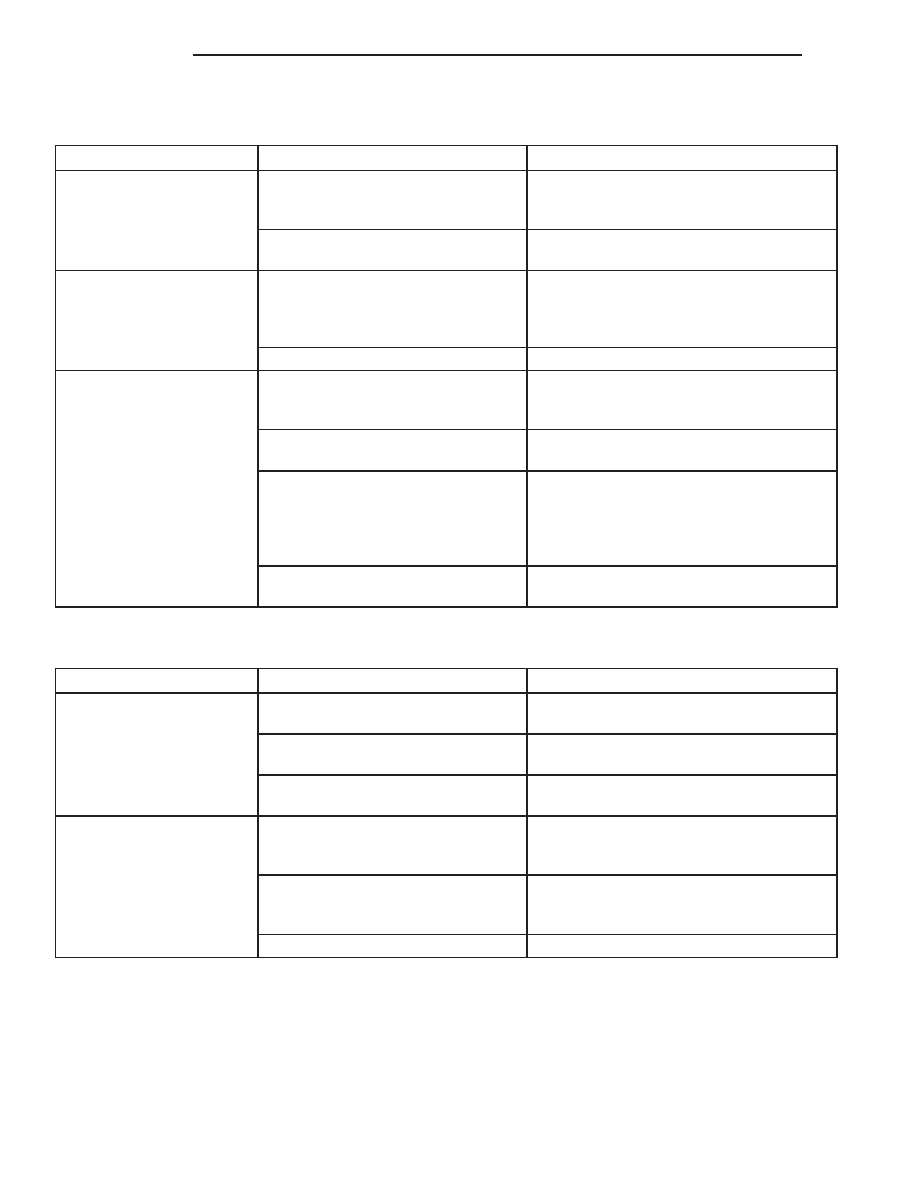Chrysler RG Voyager. Manual - part 455

SERVICE DIAGNOSIS - CLUTCH GRAB/CHATTER
CONDITION
POSSIBLE CAUSES
CORRECTION
CLUTCH DISC FACING
COVERED WITH OIL OR
GREASE
Oil leak at engine rear main or
transaxle input shaft seal.
Correct leak and replace modular clutch
assembly (2.4L Gas) or clutch cover and
disc (2.5L TD).
Too much grease applied to splines
of disc and input shaft.
Apply lighter coating of grease to splines.
NO FAULT FOUND WITH
CLUTCH
COMPONENTS
Problem actually related to
suspension or driveline component.
Further diagnosis required. Check
engine/transmission mounts, suspension
attaching parts and other driveline
components as needed.
Engine related problems.
Check EFI and ignition systems.
PARTIAL ENGAGEMENT
OF CLUTCH DISC
Clutch cover, spring, or release
fingers bent, distorted (rough
handling, improper assembly).
Replace modular clutch assembly (2.4L
Gas) or clutch cover and disc (2.5L TD).
Clutch disc damaged or distorted.
Replace modular clutch assembly (2.4L
Gas) or clutch cover and disc (2.5L TD).
Clutch misalignment.
Verify modular clutch pilot plate alignment
to crankshaft. Replace the modular clutch
assembly (2.4L Gas) or clutch cover and
disc (2.5L TD) if the pilot plate is loose or
bent.
Improper transaxle-to-engine
installation.
Verify transaxle is properly installed to
engine.
SERVICE DIAGNOSIS - CLUTCH SLIPS
CONDITION
POSSIBLE CAUSES
CORRECTION
DISC FACING WORN OUT
Normal wear.
Replace modular clutch assembly (2.4L
Gas) or clutch cover and disc (2.5L TD).
Driver frequently rides (slips) clutch,
results in rapid wear, overheating.
Replace modular clutch assembly (2.4L
Gas) or clutch cover and disc (2.5L TD).
Insufficient clutch cover diaphragm
spring tension
Replace modular clutch assembly (2.4L
Gas) or clutch cover and disc (2.5L TD).
CLUTCH DISC FACING
CONTAMINATED WITH
OIL OR GREASE
Leak at rear main oil seal or
transaxle input shaft seal
Replace leaking seals. Replace modular
clutch assembly (2.4L Gas) or clutch cover
and disc (2.5L TD).
Excessive amount of grease applied
to input shaft splines
Apply less grease to input shaft. Replace
modular clutch assembly (2.4L Gas) or
clutch cover and disc (2.5L TD).
Road splash, water entering housing
Seal housing. Inspect clutch assembly.
6a - 4
CLUTCH
RG
CLUTCH (Continued)